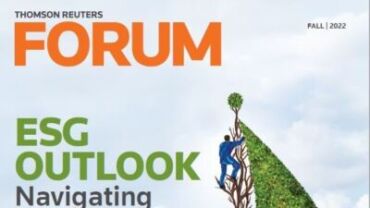Hybrid work is changing the way legal leaders need to think and act about how to manage their teams, especially around areas of giving feedback, communicating important information, and creating strong relationships, particularly with new hires
Ultimately, lawyers of all levels need to reframe how they see the office and the digital technology they use — it may be best to realize the office is now a tool and digital space is a place to facilitate the act of work.
While there is no single formula for creating an effective hybrid legal team, there are four essential strategies that legal leaders should pursue to increase the performance and success of hybrid teaming:
-
-
- Create psychological safety
- Build belonging and inclusion
- Make communication intentional
- Prioritize well-being
-
Create psychological safety
Psychological safety is trust at the team level and a foundational practice of effective hybrid teams. Psychological safety is the belief that employees can be themselves, ask “dumb” questions, share partially formed ideas and respectfully disagree with colleagues without the worry that they will be embarrassed, singled out or otherwise penalized.
Lawyers in a high-trust environment generally feel more comfortable sharing their knowledge and speaking up. Lawyers in psychologically safe environments are also more likely to identify or admit to errors and mistakes earlier. Trust also makes it more likely that lawyers will feel comfortable giving necessary feedback to others on the team. These are critical to a profession that doesn’t sell anything tangible — clients buy legal advice, which must represent the collection of the team’s expertise.
These behaviors will help legal leaders increase trust on their hybrid teams:
-
-
- Team members should be consistently reminded of the shared common goal and the outcome leaders are seeking to achieve for clients.
- Legal leaders need to be both accessible and approachable. In a hybrid environment, team members need to feel both the digital and physical presence of leadership.
- Leaders should offer encouragement — caring and kindness are the new leadership currency in law.
- Leaders should also celebrate small wins by encouraging lawyers to share examples of small successes during the past week. Tracking small successes has been shown to be a powerful form of motivation.
- Leaders should also acknowledge the limits of their knowledge. The legal matters that lawyers work on are complex and rarely have a simple answer. Saying, “I’ve not seen this issue before” or, “There isn’t an easy answer to this — let’s discuss it together” signals to team members that leaders will leverage the collective expertise of the team when needed.
- Finally, leaders need to pay attention to how they listen. Legal leaders often listen to fix problems, and lawyers generally like to listen to win; however, leading effective hybrid teams requires empathy — “humble curiosity” that promotes listening to learn and understand. You can activate humble curiosity with communication cues like, “tell me more about that/say more about that” or “walk through that with me.”
-
Build belonging & inclusion
Belonging is the need to feel connected to others and to feel like a part of groups that are important and significant to you. One of the biggest challenges legal leaders mention about hybrid work is how to consistently mentor, give feedback and otherwise build the relationships that spontaneously happened when everyone was in the same office. Belonging is such an important psychological need for lawyers that it has been shown to be among the top three drivers of lawyer well-being and motivation. It’s also critical that new professionals feel a sense of belonging quickly.
A good first step is to think about your goal for the interaction and the type of information to be discussed so the best channel to facilitate the relationship can be used. Communications experts call these channels “rich media” versus “lean media.”
A good first step is to think about your goal for the interaction and the type of information to be discussed so the best channel to facilitate the relationship can be used. Communications experts call these channels rich media versus lean media. Rich media include social and collaborative tools, video and face-to-face interactions that are often used for discussions where back-and-forth dialogue is required or when team members must discuss and interpret information and come to an agreement. Lean media are documents, email and texts, and these are often effective methods of communication when new information needs to pass from one person to another (e.g., letting someone know the meeting time was changed to 10 a.m.). Phone calls fall in the middle of the rich versus lean media continuum.
A group of general counsel recently noted the following strategies helped recent hires build strong relationships quickly:
-
-
- Allow new lawyers to shadow senior colleagues in meetings.
- Schedule meetings with key partners across the company, which also helps lawyers appreciate the broader company culture.
- Schedule extra time in one-on-one meetings to discuss non-work-related topics.
- Set up virtual coffee chats to celebrate personal and professional wins, ask questions and seek feedback about legal matters that lawyers are handling.
-
Other ways to build belonging include providing greater responsibility to more junior lawyers for tasks that are both visible and important to the organization, and structure unstructured time so that team members can talk about non-work-related topics as they continue to get to know each other.
Make communication intentional
Hybrid legal teams need to communicate in a very intentional way to make sure remote participants don’t feel excluded. The rich media versus lean media analysis from above also applies to team communication.
Team communication norms should be discussed and agreed upon at the beginning of the matter. Teams should discuss practices like how information learned during in-person conversations will be delivered to remote participants and by whom.
Hybrid teams also need to be aware of proximity bias — the tendency for partners or those distributing the work to reward the people with whom they interact in person. Leaders can combat this by coordinating days in the office — for example, requesting that everyone comes in on Tuesday, Wednesday, and Thursday. They can also make sure remote participants speak first on calls, so they aren’t forgotten or left out.
Leaders may also need to be more methodical in how they track distribution of work assignments so as not to inadvertently exclude remote lawyers.
Leaders may even want to have the entire team participate on a call remotely, even if some of them are in the office. This helps to limit the conference room “side conversations” that are common with hybrid teaming. Remote participants can inadvertently feel excluded when they join a call only to see several people huddled together in conversation.
And perhaps most importantly, leaders should clearly communicate expectations and timelines to thoughtfully manage people’s expectations.
Prioritize well-being
Our collective well-being has been significantly challenged since the start of the pandemic, and it’s an area in which lawyers have struggled for decades. Legal leaders have reported remote and hybrid work models have made it even more difficult to know when lawyers and legal professionals may be suffering from burnout and stress.
It can be difficult to recognize the signs and symptoms associated with burnout, but here are some early indicators: procrastination, a drop in productivity, getting sick more frequently with low-grade illnesses like colds and headaches, every curveball is a major crisis (having an outsized negative reaction to a small, basic request), mood changes, inability to concentrate and being detached from things they typically enjoy. Everyone on the team has a responsibility to watch for these warning signs and to invite a conversation (provided you have the right relationship with the person) if they are noticed.
The pandemic changed the way many lawyers and legal professionals want to work. Hybrid teaming is now the expectation of many talented professionals — a model (and a skill set) that legal leaders will need to continue to embrace and practice to retain their top legal talent.







